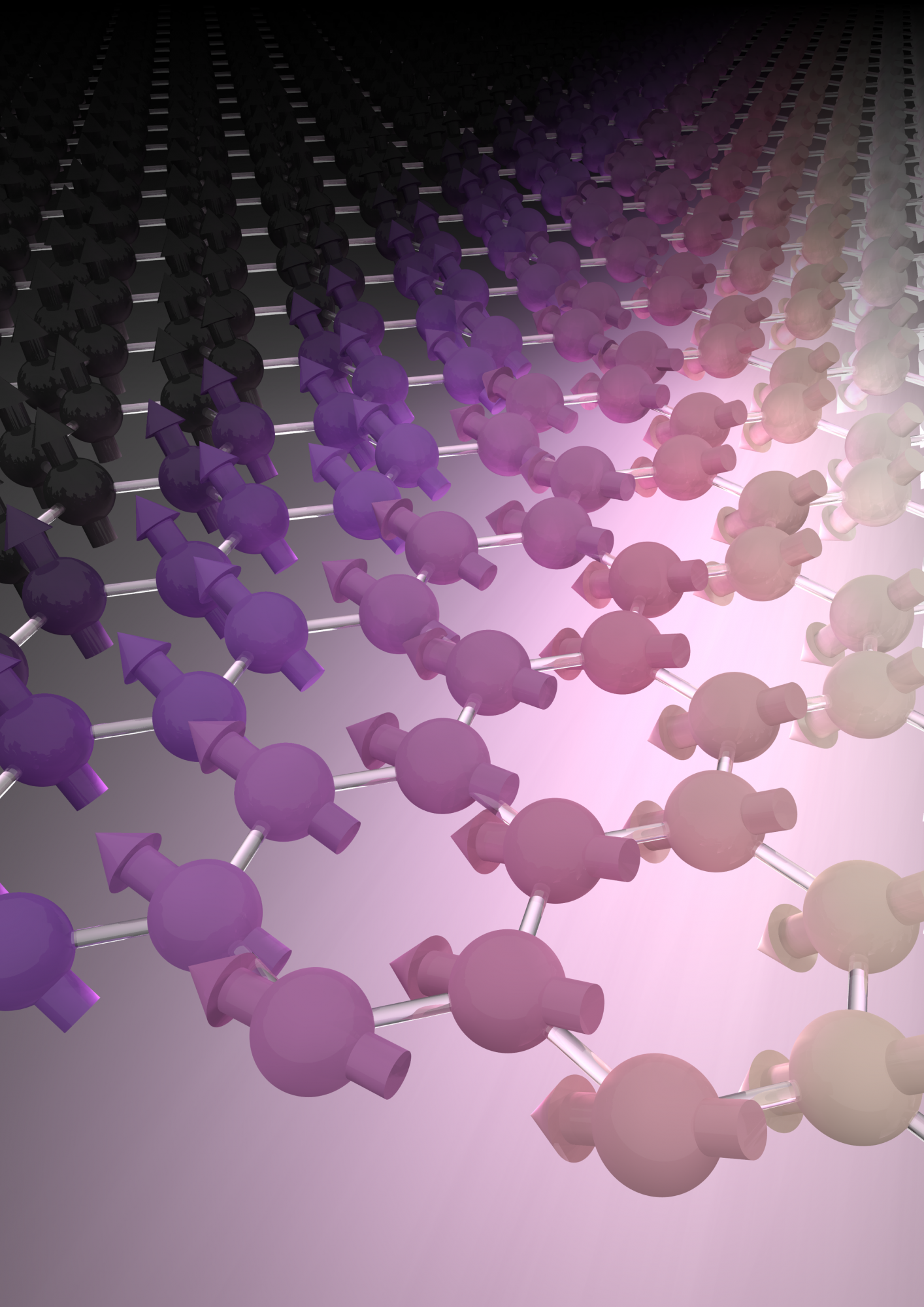PhD project: Designing the next generation of smart devices using two-dimensional materials
Project description

Background: Two-dimensional (2D) van der Waals (vdW) atomic crystals, such as graphene and boron nitride have emerged as a new class of compounds with remarkable chemical and physical properties because of their unusual electronic structure. These thin, lightweight, bendable, highly rugged materials could bring dramatic changes to information processing and communications, with applications in conformal displays, wearable computers (e.g. Apple watch), and smart environments in terms human-electronic integration (e.g. touchscreens).
Among several 2D compounds, the realisation of long-range ferromagnetic order in vdW-layered materials has been elusive till very recently. Long searched but only now discovered 2D magnets are one of a select group of materials that retain or impart strongly spin correlated properties at the limit of few atoms thick. Such crystals are in high demand in several technological applications from sensing to data storage, which can lead to new magnetic, magnetoelectric and magneto-optical applications. However, it is not totally clear how such 2D materials could develop magnetism in few Å’s thickness. Indeed, what type of magnetic order such 2D crystals can develop (e.g. ferromagnetic, antiferromagnetic, etc.) at such confined space is unknown. It has been shown to be material dependent, but no a universal and predictive theoretical framework is in place to account for different physical quantities interacting, such as dipolar interactions, crystal field and magnetic anisotropy.
Goals and objectives: In this project you will learn the fundamentals of the next generation of compounds for integration in information-platforms (e.g. hard-drives, smart phones, Tablets, etc.). It will cover the first developments, achievements, the challenges ahead, and what needs to be done to achieve them. You will master several concepts on the physics of 2D magnetic materials, their importance for technology, and possible solutions to open-problems in the real-world such as clean-energy and environment friendly devices. You will work closely with other students and postdocs involved in similar investigations.
Computational skills: You develop several computational skills in terms of first-principles methods (e.g. strongly correlated systems), Monte Carlo, Landau-Lifshitz-Gilbert equation techniques, and data-driven approaches (e.g. high-throughput, databases). Both method development and utilisation of in-house codes will be undertaken during the project. Access to computational world-class facilities via ARCHER and Cirrus UK National HPC Service at EPCC (http://www.cirrus.ac.uk) funded by the University of Edinburgh and EPSRC will be available. Previous experience on coding languages (e.g., Python, C, C++, Fortran) and numeric computing environments (e.g., Matlab, Mathematica) would be necessary.
Willingness to experience computational and numerical aspects of the project is highly desired.
Experimental and theoretical collaborations: The project will be developed in collaboration with several top-profile groups either locally or abroad. Such as at Edinburgh's School of Physics and Astronomy/School of Chemistry, as well as at the National University of Singapore, Stanford University, Max Planck Institute, Harvard University, UC Berkeley and Rice University. Several visits to different institutions will take place during the project.
Project supervisor
- Dr. Elton Santos (School of Physics & Astronomy, University of Edinburgh)
The project supervisor welcomes informal enquiries about this project.
Find out more about this research area
The links below summarise our research in the area(s) relevant to this project:
- Find out more about Quantum Ordering.
- Find out more about Computational Materials Physics.
- Find out more about the Institute for Condensed Matter and Complex Systems.
What next?
- Find out how to apply for our PhD degrees.
- Find out about fees and funding and studentship opportunities.
- View and complete the application form (on the main University website).
- Find out how to contact us for more information.
More PhD projects
- Browse other Quantum Ordering projects.
- Browse other Computational Materials Physics projects.
- Browse other Institute for Condensed Matter and Complex Systems projects.
- Browse all PhD research opportunities in the School of Physics & Astronomy.
- Browse PhD research opportunities elsewhere in the University of Edinburgh.

